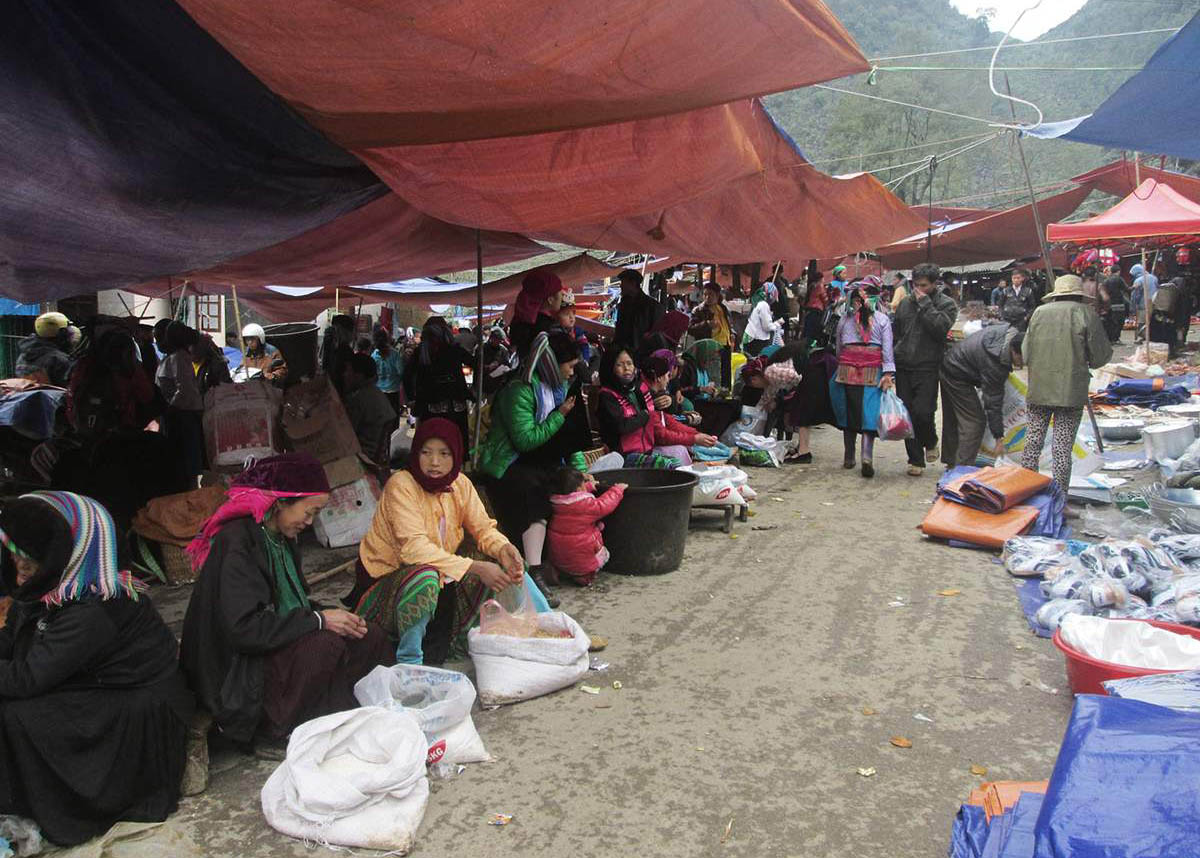The uniqueness of the “backward market”
On the Dong Van Karst Plateau, the “backward markets” (cho lui) have long been a distinctive cultural feature, deeply reflecting the identity of Vietnam’s northern highlands. They are called “backward” because each market takes place once a week, but on a different day, moving one day earlier than the previous week. In this way, the rhythm of the market flows naturally with the lives of the local people, connecting winding limestone mountain roads and linking communities across the rugged landscape.
 |
As the morning mist still lingers over the villages and the first rays of sunlight touch the mountaintops, groups of H’mong, Dao, Lo Lo, and Tay people, dressed in their vibrant traditional costumes, joyfully make their way to the market. The cheerful chatter, the sound of khen flutes and bamboo pipes blend into a lively symphony of the rocky plateau. For locals, going to the market is not merely about buying and selling - it is a time to meet friends, socialize, find love, or strengthen bonds. At these markets, visitors can find everything from simple local products such as men men (steamed cornmeal), corn wine, and forest honey, to more unique goods like wild orchids, Mong flutes, and handwoven brocade skirts. Sellers rarely bargain, and buyers don’t calculate gains or losses - transactions are made with trust and joy.
Amid the fast pace of modern life, the backward markets remain preserved as a “living museum” of highland culture. They are keepers of memory and tradition, serving as a bridge between ethnic communities and contributing to the distinctive charm of the Dong Van Karst Plateau Global Geopark, recognized by UNESCO. For travelers, visiting a backward market offers an authentic glimpse into the warm, simple rhythm of life in the rocky highlands. The vivid colors of traditional dresses, the laughter echoing through the mountains, and the fragrant aroma of corn wine leave an unforgettable impression, drawing visitors back, time and again, to the markets perched high above the Tuyen Quang mountains.
Kim Tien





READER COMMENTS